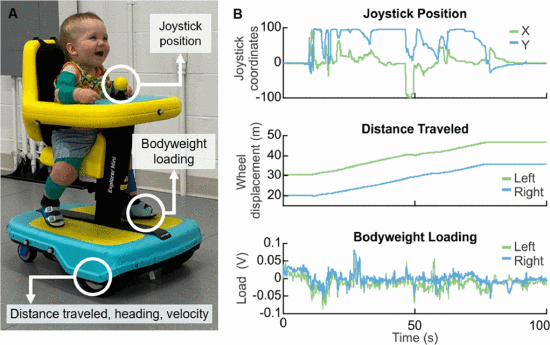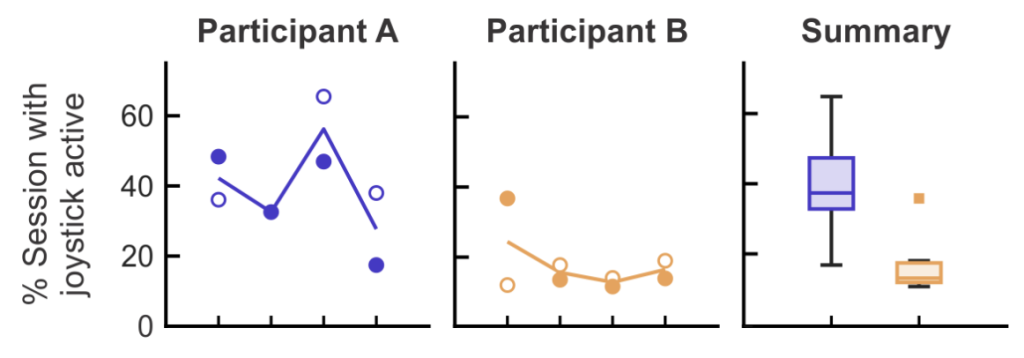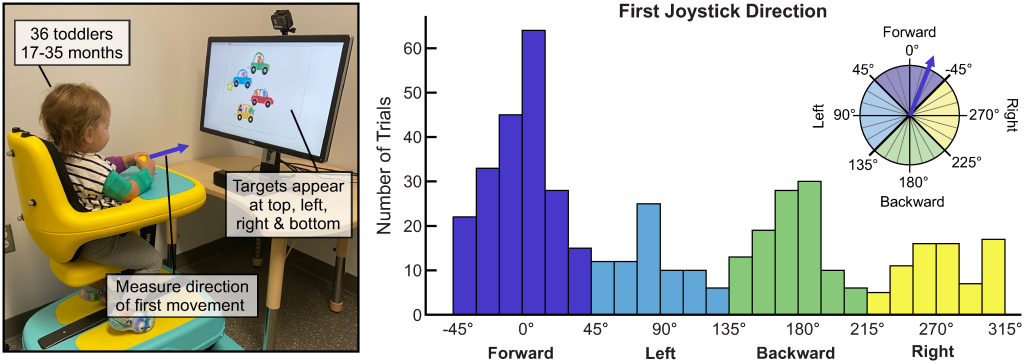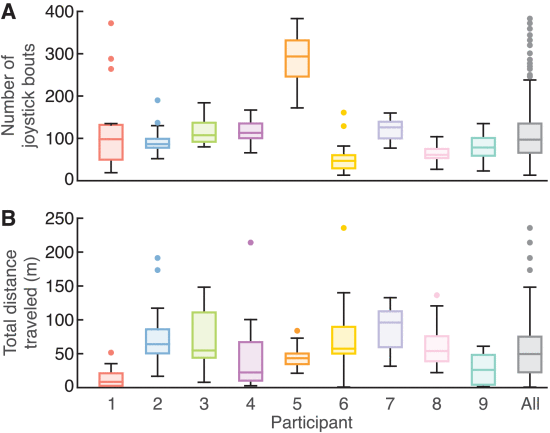Mobility is a fundamental human right.
The ability to move and explore the world, supports our learning, development, and social engagement. However, for many children with disabilities, mobility is often delayed and limited due to physiological impairments, societal expectations, and environmental barriers. Understanding the neuromechanics of how children learn, play, and explore their world is critical to support mobility in all its forms. Our team is working on new tools and technology to support early mobility for children with disabilities. From wheels to walking, we are examining the interacting effects of mobility on socioemotional development, play, and participation.
Partners
Supporting On-Time Mobility (2021-Present)
Mobility technology such as manual and powered wheelchairs, scooters, and modified ride-on toy cars, are essential tools for young children with physical disabilities to self-initiate exploration, make choices, and learn about the world. In essence, these devices are mobile learning environments. Although there is some evidence that mobility technology positively impacts the developing brain and identity of children with physical disabilities in the first years of life, we still do not understand how the introduction of such technology, as well as its timing and dosage, affects learning and developmental outcomes, specifically related to communication, cognition, and agency. This knowledge could fundamentally shift the landscape of mobility technology provision in early childhood, influencing social attitudes and mitigating funding challenges surrounding mobility devices for young children with disabilities.
The collaboration, led with Heather Feldner and Kim Ingraham from CREATE, and Pat Kuhl and Andy Meltzoff from I-LABS, brings together expertise from fields of rehabilitation medicine and disability studies, engineering, language development, psychology, and learning. This collaboration will address several critical knowledge gaps: How do early experiences with mobility technology impact brain development and learning outcomes? What are critical periods for mobility? How and when should mobility technology be deployed to compliment traditional motor skill acquisition in pediatric rehabilitation? How does current technology meet (or fail to meet) the needs of children with physical disabilities and their families? We believe that answers to these questions will begin to demonstrate that early access to mobility technology is a critical asset for development and learning, rather than a last resort for remediation or accommodation.
We have instrumented an Explorer Mini from Perimobile, the first FDA approved powered mobility device for 1-3 year olds with sensors to let us monitor joystick activations, movement, and force.
We know comparatively little about how toddlers interact with joystick-based technology, and more fundamental research is required to understand joystick interactions at different ages and developmental stages. We quantified how 36 nondisabled toddlers used a joystick to play a cause-and-effect game on a computer. Children demonstrated a strong preference for moving the joystick forward first, regardless of the target direction. On average, the oldest children navigated the joystick to the target 5 seconds faster than the youngest children, and were nearly twice as efficient in their joystick path. These findings inform the design of assistive algorithms for joystick-enabled computer play and developmentally appropriate technologies for toddlers.
We also evaluated nine children with motor disabilities (ages 12-36 months) who participated in 12 in-lab visits. During each visit they engaged in two 15-20 minute play sessions. For each session, we calculated several quantitative
outcome metrics, including the time spent using the joystick, distance traveled, and the number, duration, and complexity of joystick interactions.
Every child independently interacted with the joystick and moved the Explorer Mini during every session. Over 12 visits, participants significantly increased their distance traveled and the time spent with the joystick active. Children love to play, interact, and explore. Let’s find the best tools to support each child.
Acknowledgements
We thank the incredible and amazing team at LUCI Mobility for their work instrumenting the Explorer Mini, and particularly thank Jered Dean, Adam Morgan, and Josh Burmeister for their continued technical support. They would also like to acknowledge Anna Fragomeni, Julia Mizrahi, and Bo Woo for their assistance with data collection.





